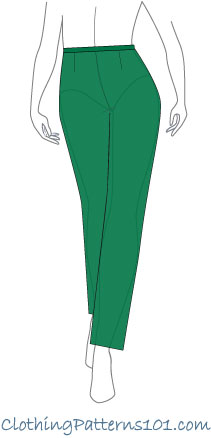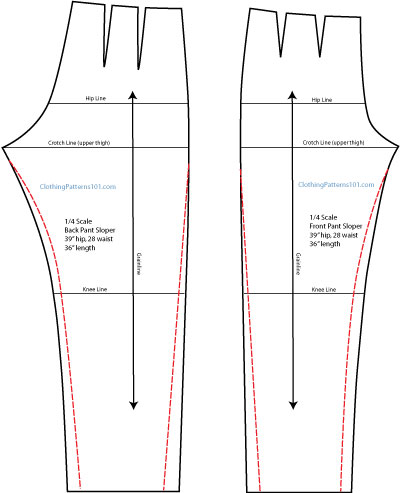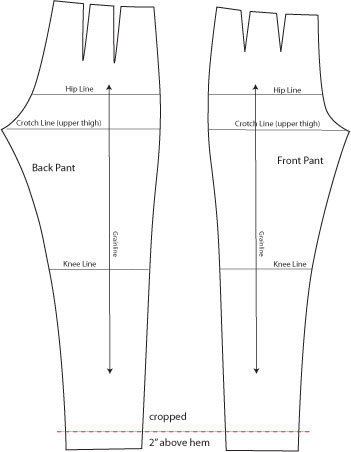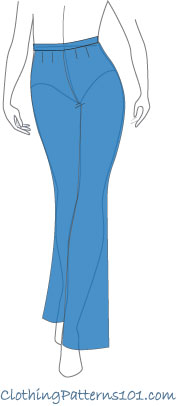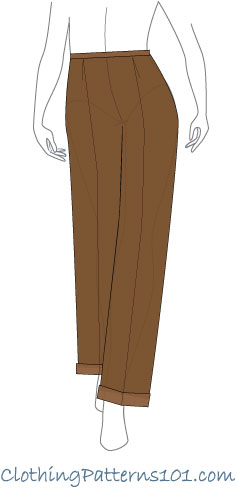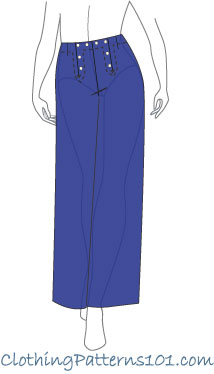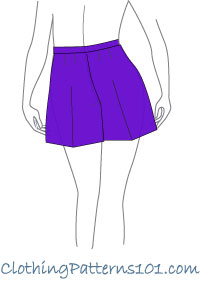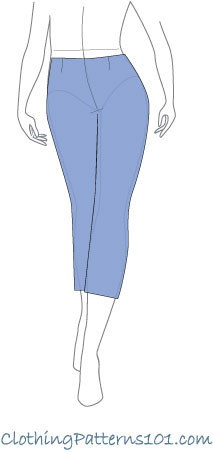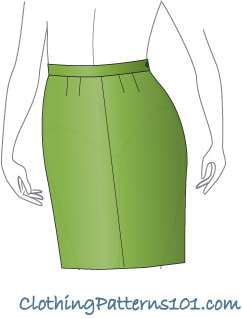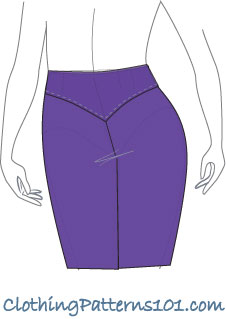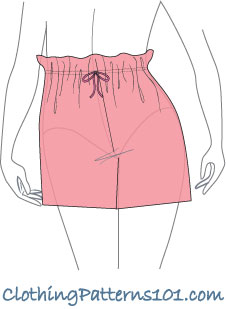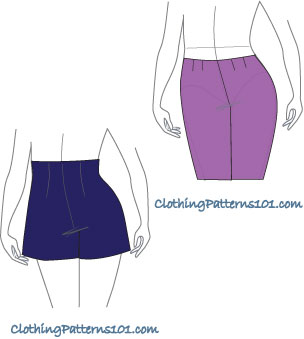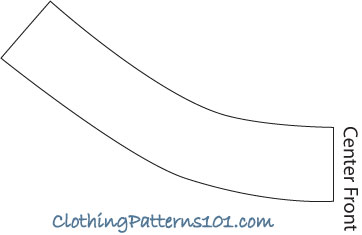- Clothing Patterns 101
- Pant and Shorts Styles
- Tapered Pants
How to Draft a Tapered or Skinny Pant Pattern
Tapered pants are flattering on most figures, and tapering the leg of your pant block is easy!
These instructions are for a tapered, easy-fit pant, not a knit legging (your block is not designed for knits, and you'll still have some ease in this pattern).
Tapered pants look good in any length, but I think tapering the leg is a must if you are shortening the pant to a capri, pedal-pusher, or just above the ankle.
Before you create these pant styles, you'll need a well-fitting pant block. You can create your pant block using a commercial pattern, or by drafting it from your own measurements. Drafting can be a bit complicated, but Craftsy's course, Patternmaking + Design: the Pants Sloper will walk you through it.
Tapered pants (in a woven fabric, not form-fitting leggings) are comfy, yet polished. They can be nice women's dress pants.
The fit through the waist and hip is the same as your block - fitted, but not tight.
These pants begin to taper at the thigh, to the hemline. The look is a smooth, continuous line that looks great with flats or heels.
Tapering the pant leg
To create the taper, start from the thigh (crotch line) at the outseam.
Draw a straight line from the thigh/crotch line to the hem, taking it in as much as you wish. I've drawn the line about 1" inside the original side seam. It doesn't seem like much, but you'll take in the same amount on the inseam, and on both the front and back leg - tapering a total of 4" all around each leg!
On the inseam, start just below the crotch and draw your line to the hem - taking in the same amount you subtracted from the outer side!! This line will have a more extreme curve than the original inseam, especially just below the crotch.
Make the same alterations on the front and back pant leg. It is critical to taper the same amount at the hemline on each side of the leg (inseam and outseam), and to the front and back leg. This keeps the leg balanced so it will hang properly, without skewing
|
The leg can be tapered as much or as little as you like. You can bring it in just a bit, or make your pants really skinny! More on that, below. Just be sure to balance the leg by adding the same amount on each side of the leg, and on the front and back leg. Finally, I like the hem of a tapered pant to sit just a bit higher than that of a wider-leg pant. Most pant hems should "break" at the top of the shoe. I find a tapered pant looks better when it sits at the top of the shoe, or just a bit shorter. I recommend shortening the leg of the pant by 1 1/2" - 2". |
This page shows how to draft a pant pattern using your pant block. Remember to finish your pant with hems and seam allowances!
More Pant Styles
|
More Waist Treatments
Return to Clothing Patterns 101 Home Page
ClothingPatterns101.com does not sell the personal information of its users to anyone, ever.
